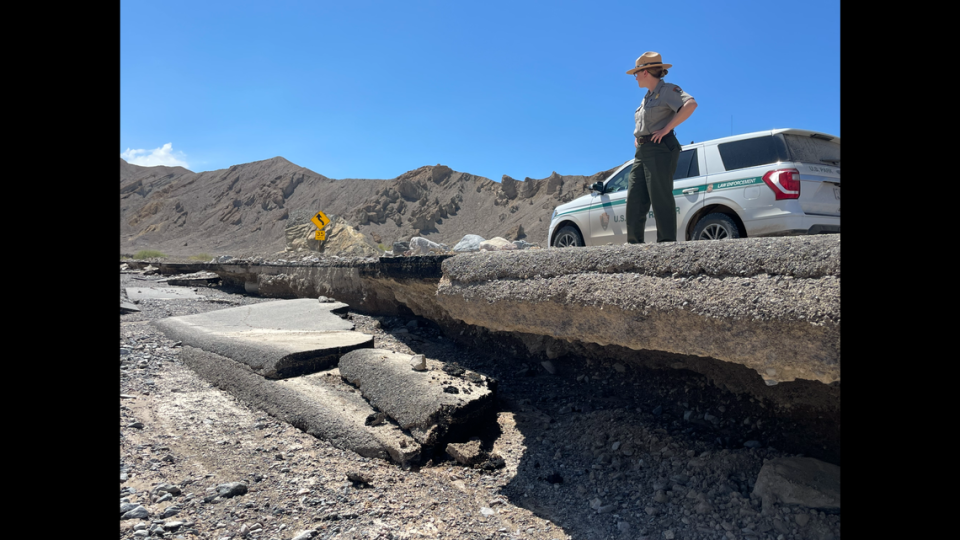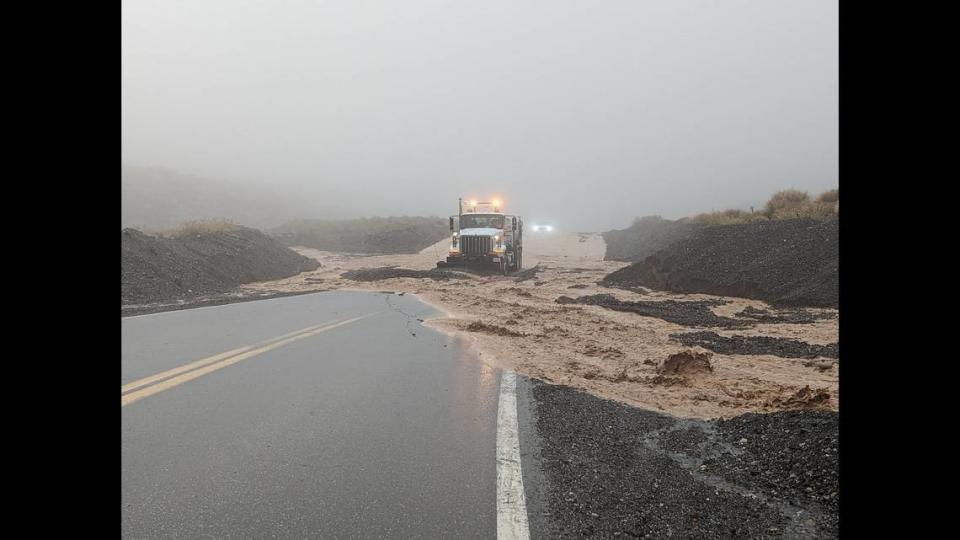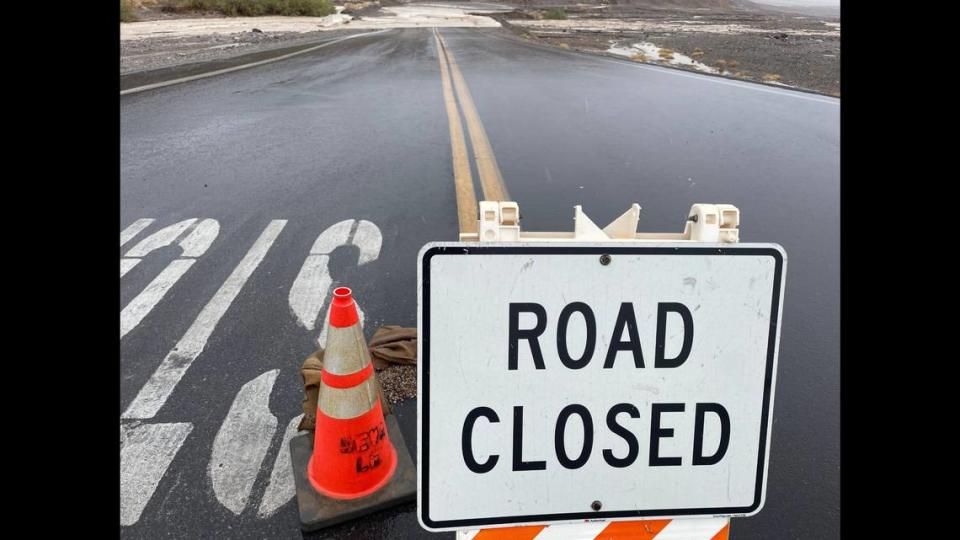A year’s worth of rain dropped at Death Valley in one day — and photos show the damage
“The remnants of Hurricane Hilary” brought 2.2 inches of rainfall in one day to Death Valley.
Though this may not seem like a large amount, it was the park’s “rainiest day ever” and more than it usually gets in a whole year, the National Park Service said in an Aug. 23 news release.
And with such a historic day of rainfall came destruction.
The park suffered major flood damage, leading to the its closure, according to rangers.

“We have more than 34 acres assessed, but the fact is, with more than 3.4 million acres to manage, Death Valley is a very large park and this is going to take some time,” the park wrote in an Aug. 24 Instagram post.

A new record
The park sees an average rainfall of 2.15 inches annually, rangers said.
On Aug. 20, however, rangers said the park saw 2.2 inches of rain, breaking the park’s previous record day of rainfall of 1.7 inches in August 2022, according to rangers.
Some parts of the park may have even seen about 5 inches of rain that day, rangers said.

What to know about flash floods
Flash floods happen when “rainfall exceeds the land’s ability to absorb water,” rangers said.
In Death Valley National Park, rangers said “even small amounts of rain can cause dangerous flash floods.”

“Picture the mountains in Death Valley as being a steep building roof,” park ranger Abby Wines said in the release. “Just like a roof, the rocky slopes don’t absorb much water. The canyons function like a rain spout, channeling that runoff. However, in Death Valley that runoff is a fast-moving muddy soup carrying rocks.”
Extent of damage unknown
All the paved and unpaved roads throughout the park were damaged, rangers said.

In addition to the road damage, the debris brought by flash flooding also undermined four utility systems.
“The full extent of the damage across the park will not be known for a period of weeks,” rangers said.

Reopening in stages
Though there is no set reopening date for the park, rangers said they expect it will reopen in stages during the coming weeks.
It could take months to fully reopen, according to rangers.

“We ask the public for patience and to honor the closures so we can do the work needed to get Death Valley open as quickly as possible and safe for everyone to visit,” Superintendent Mike Reynolds said in the release.
Hundreds shelter in Death Valley after Hilary dumps ‘year’s worth of rain’ in one day
Devastating Yellowstone floods will keep part of park closed for rest of the season
Tourists can visit Yellowstone again soon — but only certain areas. What to know

